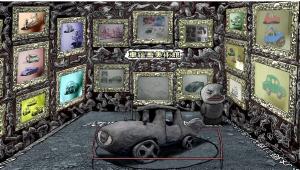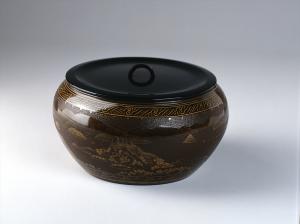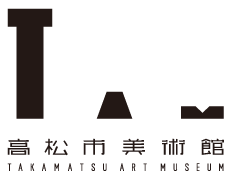Collection Exhibition 3th term 2022
PERMANENT
Gallery 1: The Power of Letters.

Works of art often include text or lettering of some kind. The written word can take on all sorts of roles while helping to expand the world of the piece of question.
In the West, the surrealist painter René Magritte used a painting of a pipe and the words below it, in French, stating, “This is not a pipe,” to reaffirm that art is nothing more than an image of that which it depicts. In the time since, the text has been frequently used in pop art, as well as to impart the concept of the work in conceptual art. “NOV.18, 1987” by On Kawara, which turns the date of the piece’s creation into an artwork itself, is positioned as conceptual art.
In Japan, meanwhile, images and text have long coexisted in things like hanging and picture scrolls. The works of artists like Takashi Murakami and Akira Yamaguchi have followed these Japanese traditions. Then there are the works of Miran Fukuda, such as “Spring Landscape,” which takes the sound of the wind felt from Sesshu’s work and expresses it with lettering, the shape of the text expressing sounds and voices.
This exhibit also features posters and paintings by Tadanori Yokoo, who became an artist after being a designer, and animation work from Atsuro Terunuma depicting a city overflowing with words.
Gallery 2: What is -Sanuki Lacguerware-

Sanuki lacquerware is widely known as a traditional art form of Kagawa. But some likely many people don’t know or remember what kind of material lacquer is, or what the three main techniques that comprise Sanuki lacquerware is—zonsei, kinma, and choshitsu. These techniques were created at the end of the Edo Period by the lacquer artist Zokoku Tamakaji, with reference to such sources as works from overseas. The technique being used makes a significant difference to the final piece. Of course, the pieces can be viewed and enjoyed without knowing anything about the techniques behind them, but such knowledge may change the way you view them.
There are also pieces that use these techniques to depict the scenery of Sanuki. For example, the piece “Water jar with design of Setonaikai, kanshitsu, kinma” by Joshin Isoi, who became a living national treasure due to his use of the kinma technique, depicts the scenery of Gokenzan, the salt fields, and Yashima around a water jug. The work of other living national treasures, such as Hitoshi Oota and Masami Isoi, also depicts scenery, including Mt. Sanuki Fuji and Yashima.
This exhibit introduces the three techniques used by Sanuki lacquerware while also exhibiting the pieces that depict the scenery of Sanuki. Please enjoy the world of Sanuki lacquerware, the treasure of Kagawa.
Information
Period:
November 16(Wed.),2022-December 25(Sun.),2022
Venue:
Permanent Collection Gallery
Closed:
Monday(the following weekday if Monday is a holiday)
Hours:
Monday-Saturday & Holidays: 9:30-17:00 (Entry until 16:30)
*Until 19:00 during special exhibitions on Friday and Saturday.
*Last entry is 30 minutes prior to closing.
Organized by:
TAKAMATSU ART MUSEUM
Admission:
【General 】200yen(160yen)
【University students】150yen (120yen)
【High school age or younger/Seniors 65+】Admission free
※Advance Purchase and Groups of 20 or More Get Discounts (pricing in parenthesis)
※Free admission for those with a physical disability certificate, rehabilitation certificate, or mental disability certificate.
Telephone Inquiry
TAKAMATSU ART MUSEUM
TEL +81-87-823-1711






